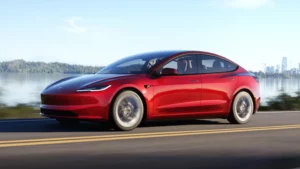Peabody filed for bankruptcy on Wednesday, the most powerful convulsion yet in an industry that’s still waiting for the coal market to bottom out.
The company is seeking to reorganise U.S. operations in federal court in its hometown of St. Louis, reducing an estimated $10.1 billion in debt, according to court filings. It’s the biggest U.S. corporate bankruptcy this year by liabilities, according to data compiled by Bloomberg.
The outcome of the case may turn on what trajectory coal prices take over the course of the reorganisation, with battles over environmental obligations and non-bankrupt Australian operations complicating matters, according to analysts and environmental activists.
Founded in 1883 by 24-year-old Francis S. Peabody with $100, a wagon and two mules, the miner is now the largest private-sector coal company in the world. It joins four other large coal companies that have sought bankruptcy during the slump — a result of tougher environmental policies, a flood of cheap natural gas and a global glut of metallurgical coal that’s dragged prices for the steelmaking component to the lowest in more than 10 years.
“The outlook for coal players remains bleak,” said Sandra Chow, a Singapore-based credit analyst who tracks coal producers at CreditSights Inc. “Any recovery remains a long way from here.”
Peabody, which had revenue of $5.6 billion in 2015 and about 7,100 employees globally, will keep operating during the reorganisation, according to court papers.
Australian Operations
The price of metallurgical coal has tumbled about 75 percent since its 2011 peak. That’s been particularly painful for Peabody, which spent $4 billion in 2011 to acquire Australia’s MacArthur Coal Ltd. to expand its sales of the steelmaking component. Australian operations, which are among the leading producers of seaborne metallurgical coal, continue as usual and aren’t part of the bankruptcy, according to court papers.
“It wasn’t a question of whether Peabody was going to file, it was a question of when and would they include the Australian assets,” Jeremy Sussman, a New York-based analyst for Clarksons Platou Securities Inc.
Peabody filed in the U.S. because Chapter 11 allows it to retain control of its businesses, providing protection that isn’t available in Australia, said Beth Sutton, a Peabody spokeswoman in St. Louis. Also, the company’s debt is primarily at the corporate level, she said.
Peabody Chief Financial Officer Amy Schwetz said in court filings that after the MacArthur purchase and other acquisitions the following year, international coal prices began a downward cycle, making the company’s debt unsustainable.
Powder River Basin coal, produced from one of Peabody’s largest mines, traded Tuesday at $9.05 a ton, the lowest price in more than three years and 16 percent below the five-year average, according to data compiled by Bloomberg.
Now and Later
“I very much expect them to go through a restructuring where the vast majority of assets that are producing today will produce for the foreseeable future,” Sussman said. “It’s much more of a balance sheet restructuring than anything else.” The analyst said most of Peabody’s mines make money, unlike those belonging to other bankrupt miners, such as Walter Energy Inc. or Alpha Natural Resources Inc.
Peabody said it will use the bankruptcy to cut debt and improve cash flow and remained upbeat about its product.
“Coal currently fuels approximately 40 percent of global electricity and is expected to be an essential source of global electricity generation and steel making for many decades to come,” according to a company statement issued alongside the court filing.
The Energy Information Administration estimates the fuel generated about 28 percent of U.S. electricity in December. Demand from power plants and steelmakers should remain weak through 2016, but India and Southeast Asia will be bright spots, said Bloomberg Intelligence analyst Andrew Cosgrove.
Shrinking Pains
“This isn’t a death knell for coal. It’s the pains of a shrinking industry,” Cosgrove said.
The market may improve while Peabody restructures, Lucas Pipes, an analyst for FBR Capital Markets.
“We’re talking about a massive reduction in coal output in the U.S. that would cure the oversupply we’re seeing, reduced drilling activity in natural gas,” he said. “We’re seeing better industry indicators out of China that has led to a rally in steel prices among some other commodities.”
Last year Peabody began cutting jobs and looking to sell assets. A planned sale of its New Mexico and Colorado assets was terminated after the buyer was unable to complete the transaction, according to Wednesday’s statement.
To help fund operations during bankruptcy, Peabody said it has agreed to $800 million in financing, arranged by Citigroup, pending court approval.
Peabody’s unsecured creditors include holders of five types of unsecured notes, together worth $4.5 billion. Another big claimants is the Office of Natural Resources Revenue, which is responsible for mineral leases, owed $249.4 million. The company also listed an $11.7 million claim related to retiree obligations for Patriot Coal Corp., which Peabody spun off almost a decade ago.
Credit default swaps traders began the process of seeking payouts on about $209 million of credit derivatives that were protecting against default.
Cleanup Costs
The bankruptcy leaves uncertainty around Peabody’s environmental liabilities. Under a federal law enacted in 1977, mining companies must post surety bonds or other collateral that cover future mine cleanup costs unless their balance sheets are strong enough to qualify for an exemption known as “self-bonding.” Peabody said in court filings that its ability to keep up its surety program, which includes bonds worth $1.8 billion, it key to its ability to maintain operations.
Taxpayers for Common Sense, a U.S. advocacy nonprofit, and the Natural Resources Defense Council, an environmental group, both said Peabody’s financial troubles spell future mine cleanup costs for taxpayers, and illustrate the weakness of bonding practices.
Self-bonding “will probably be one of the bigger fights in bankruptcy,” said Sussman, the Clarksons Platou analyst. “Too early to tell the outcome.”
Peabody, which boasts of its sustainable mining practices and “clean coal,” says it has restored thousands of acres of mined lands over its long history.
Land Restoration
“The company sees its land restoration as an essential part of the mining process,” it said in the statement Wednesday. “Peabody intends to continue to work with the applicable state governments and federal agencies to meet its reclamation obligations.”
Powder River Basin Resource Council, a group focused on Wyoming, said that with more than 90 square miles of coal mines in the area, cleanup will cost more than $800 million. Greenpeace said its Australian arm has asked the government there to probe whether a U.S. bankruptcy could pose a problem for Queensland and New South Wales governments “if Peabody’s financial assurance is insufficient to rehabilitate its mine sites.”
Peabody said its creditors have no direct security interests in the Australian assets and retiree benefits there aren’t at risk. The company has $300 million in bank guarantees to back reclamation obligations, Sutton, the Peabody spokeswoman, said in an e-mailed statement.
Peabody grew quickly after its humble beginnings. The 133-year-old company listed on the New York Stock Exchange in 1949 and went through many corporate incarnations. It spun off operations in Appalachia and the Illinois Basin as Patriot Coal in 2007. Patriot filed for bankruptcy in 2012 and again in 2015, joining Alpha, Walter, Arch Coal Inc. and James River Coal Co.
Implications of the year’s largest Chapter 11 case are already notable, according to Fitch Ratings. The bankruptcy, which affects about $8.4 billion in loan and bond debt, increased the U.S. institutional leveraged loan default rate in the metals and mining sector to 29 percent from 25 percent over the past 12 months, Fitch said.
“Recovery prospects for unsecured notes are poor,” it added.
The case is In re Peabody Energy Corp., 16-42529, U.S. Bankruptcy Court, Eastern District of Missouri (St. Louis).
Reporting from Bloomberg




